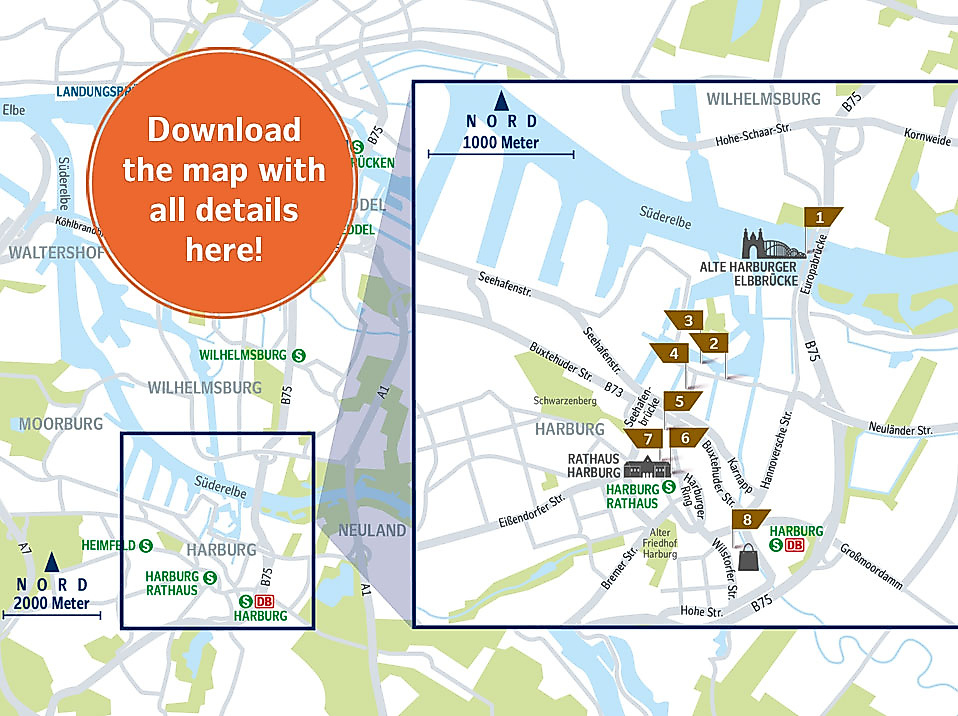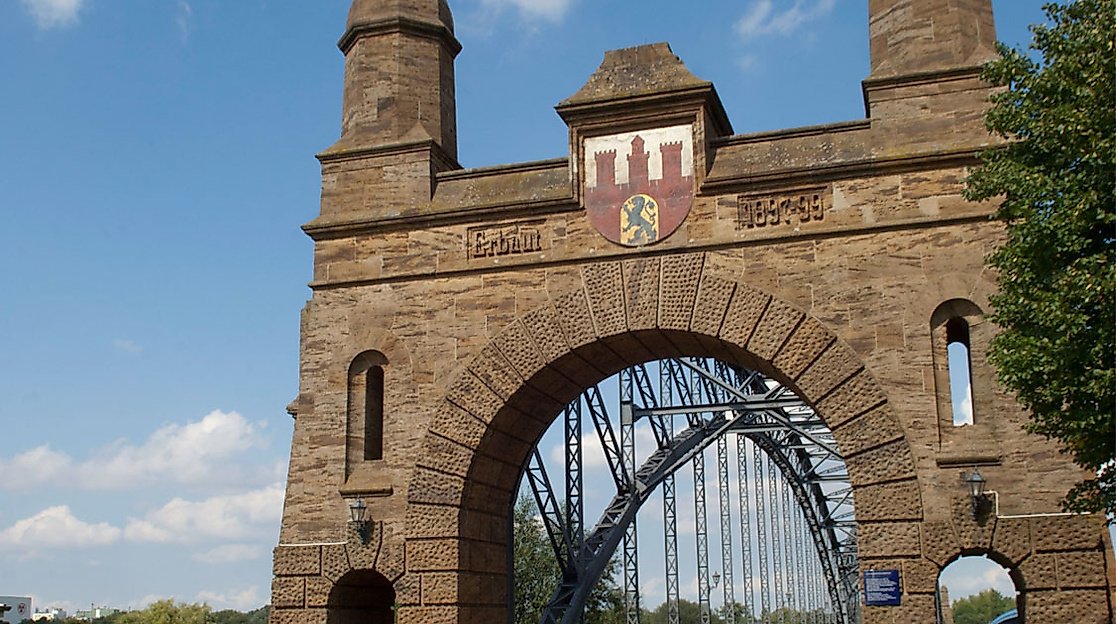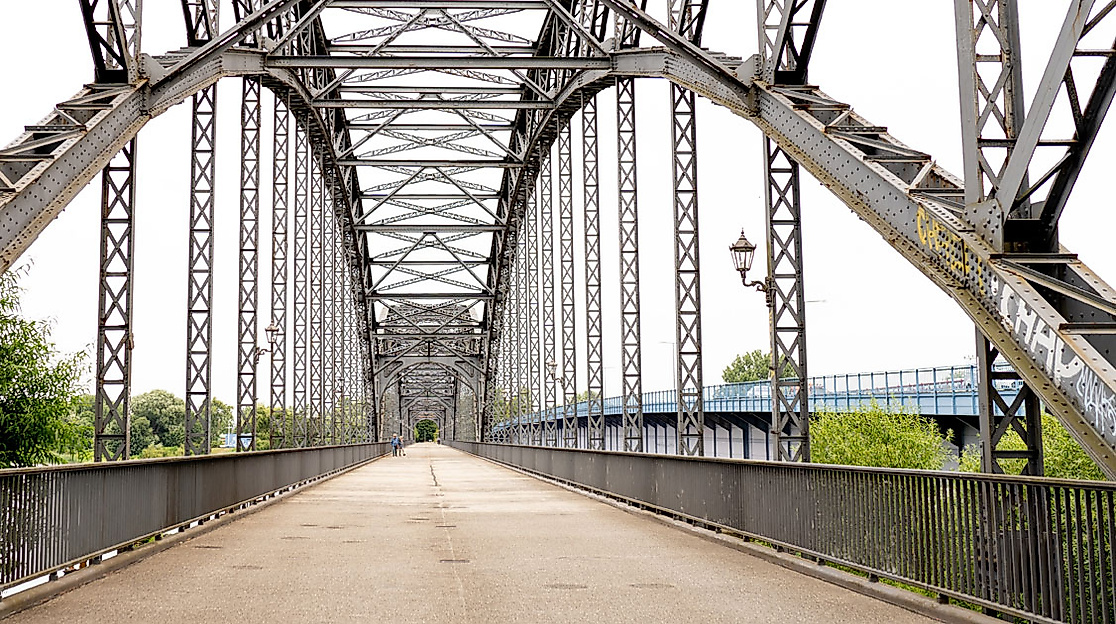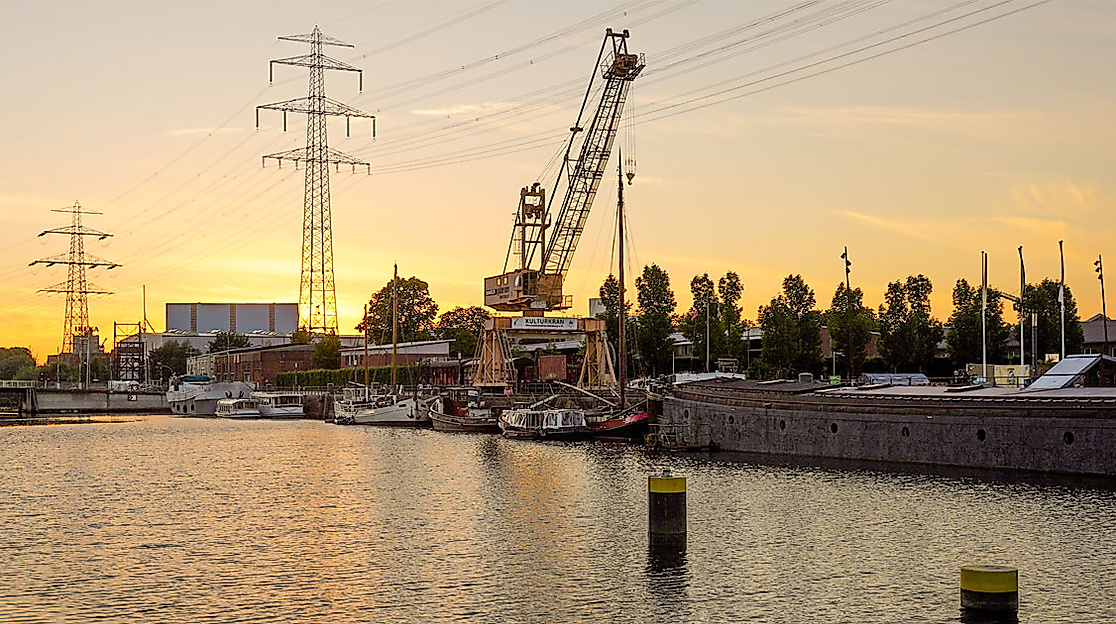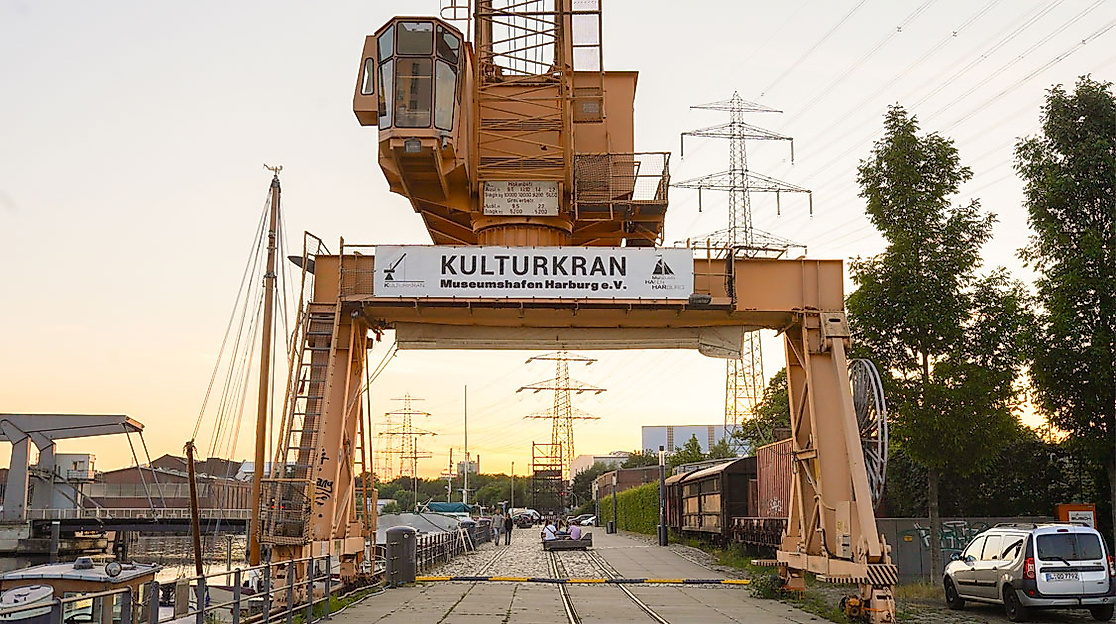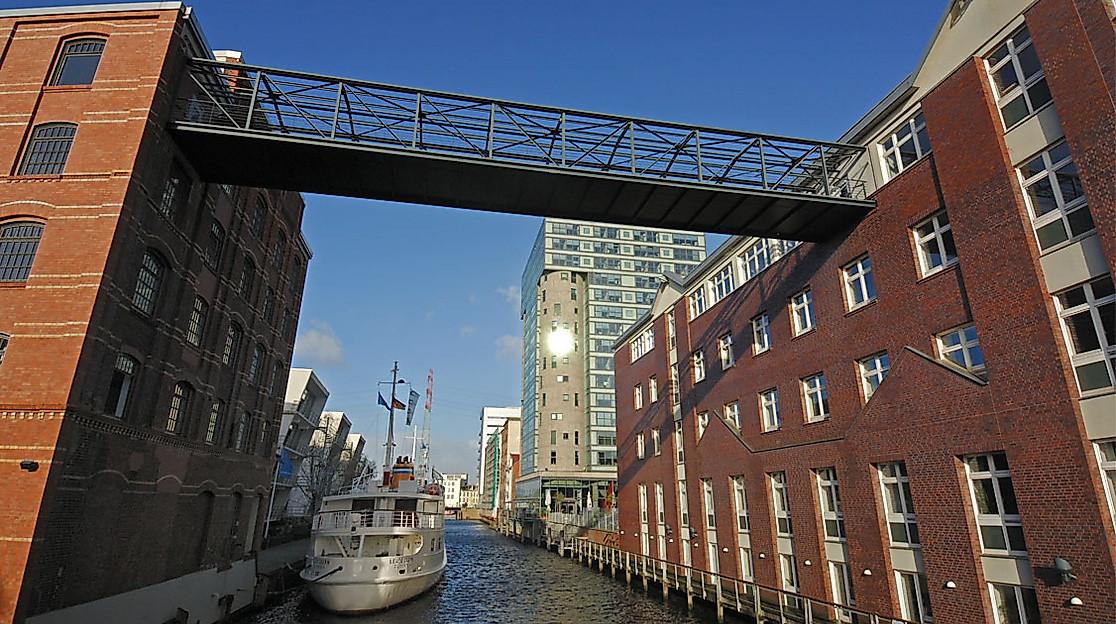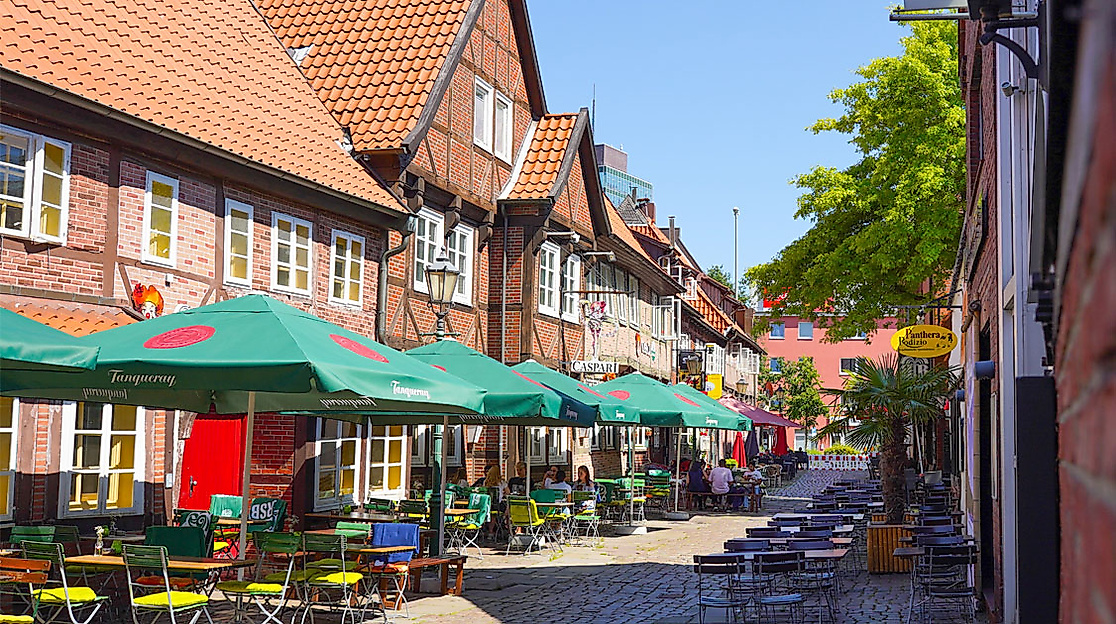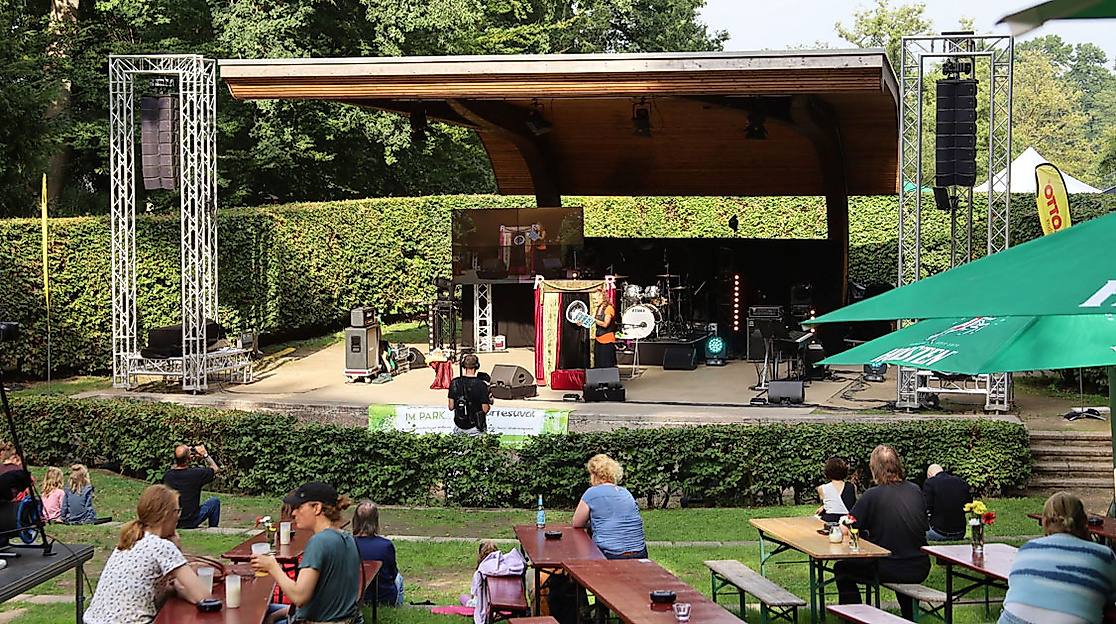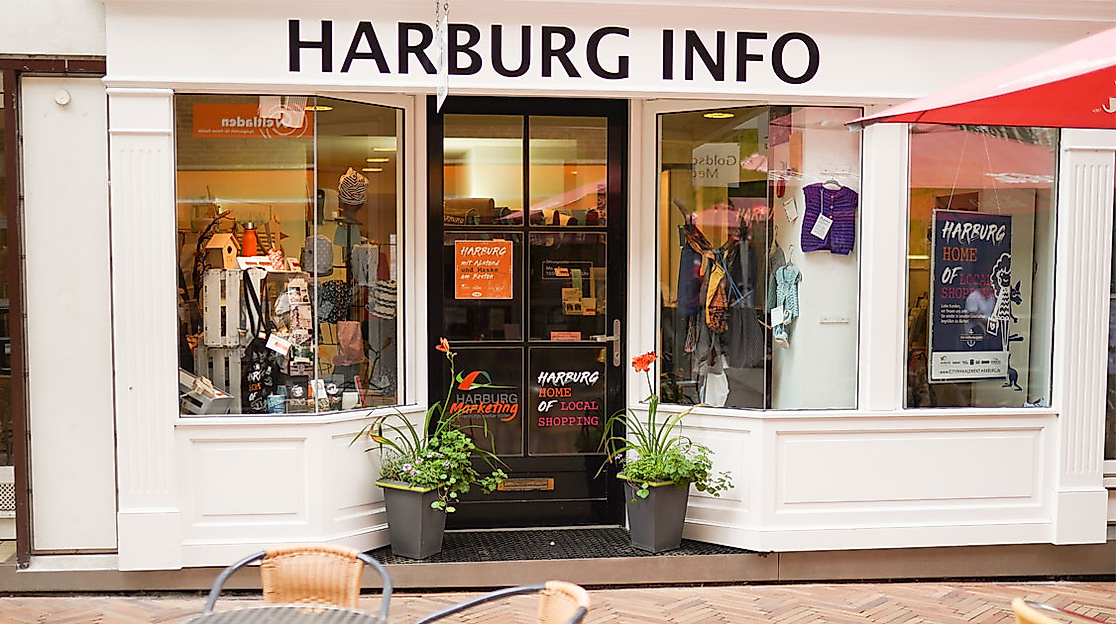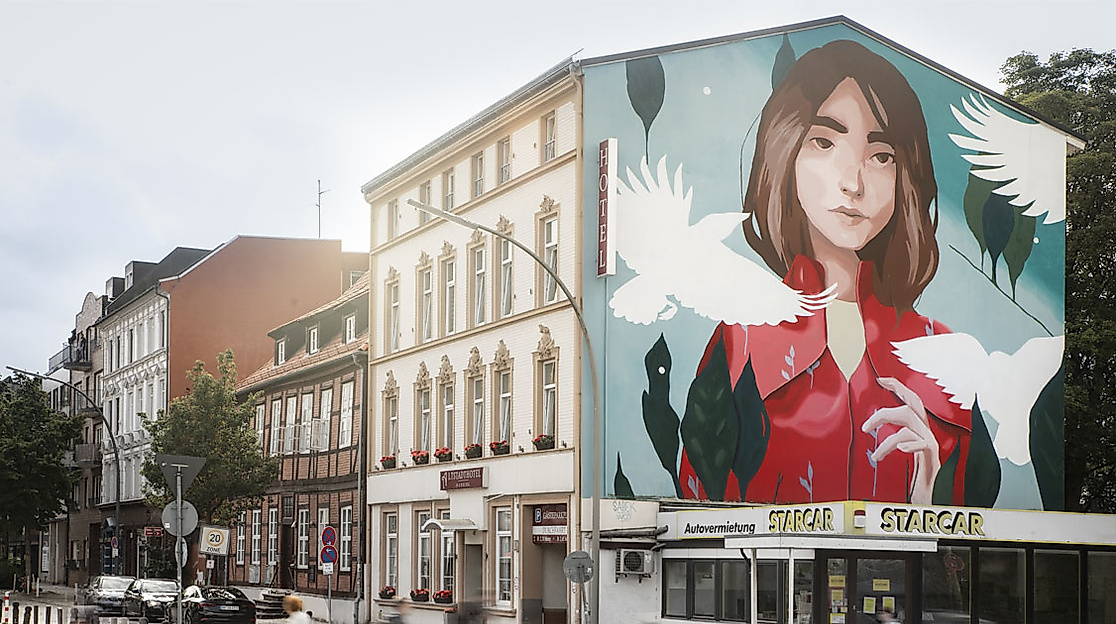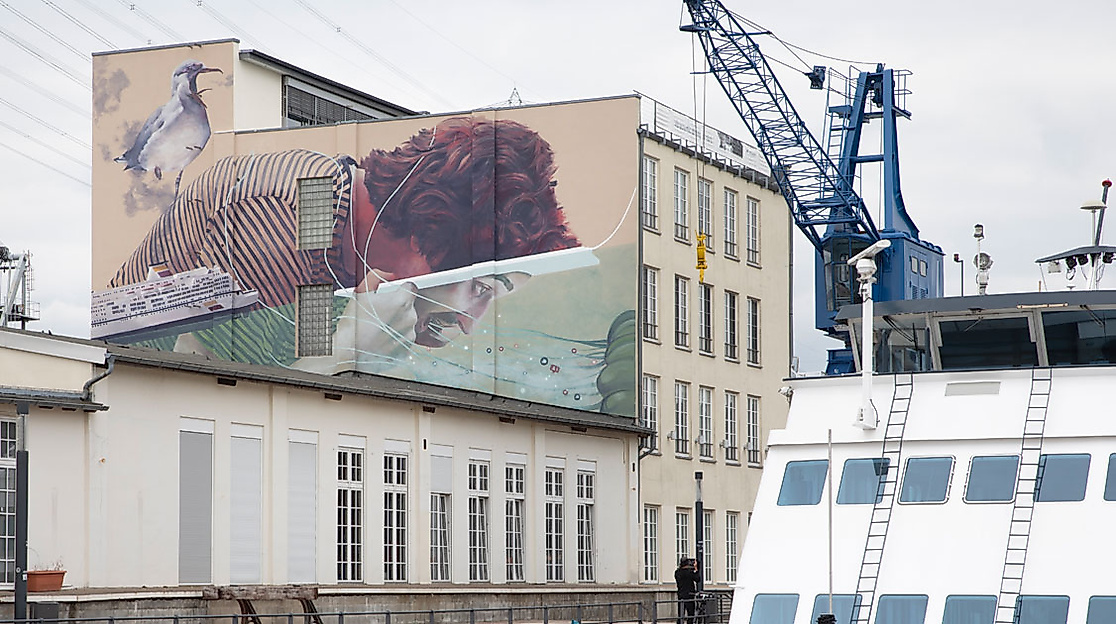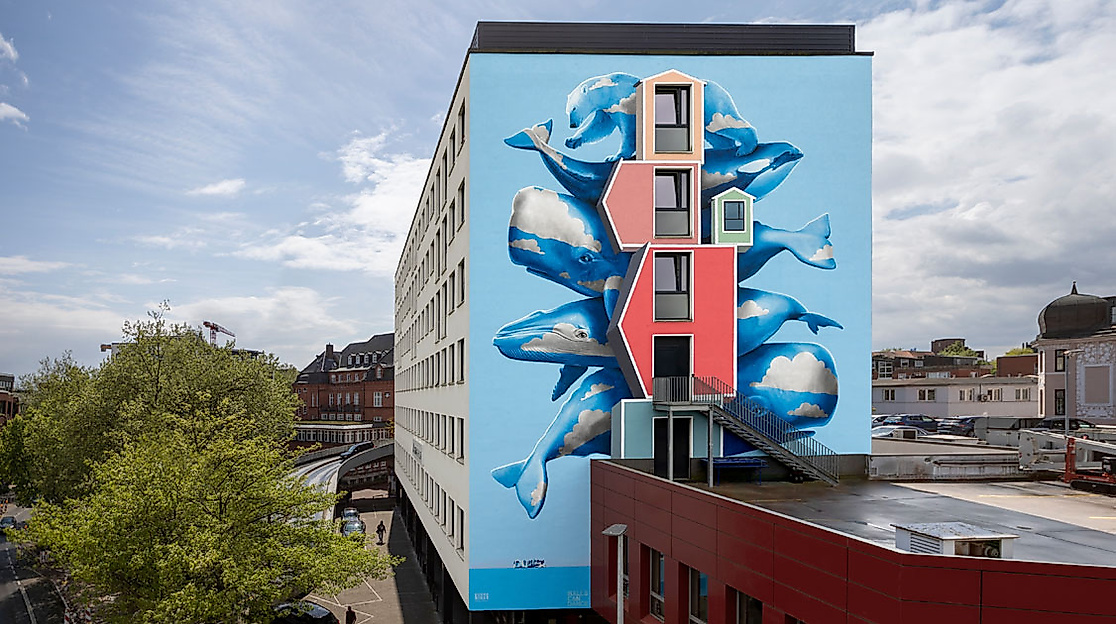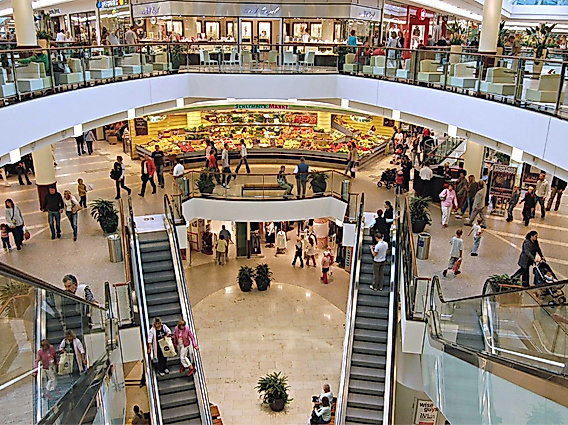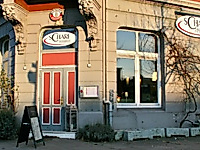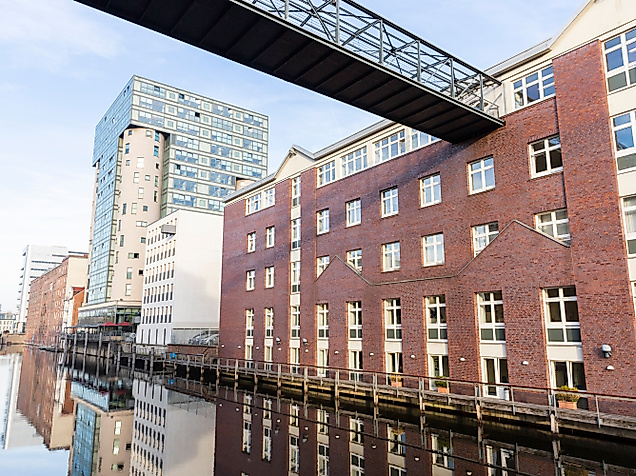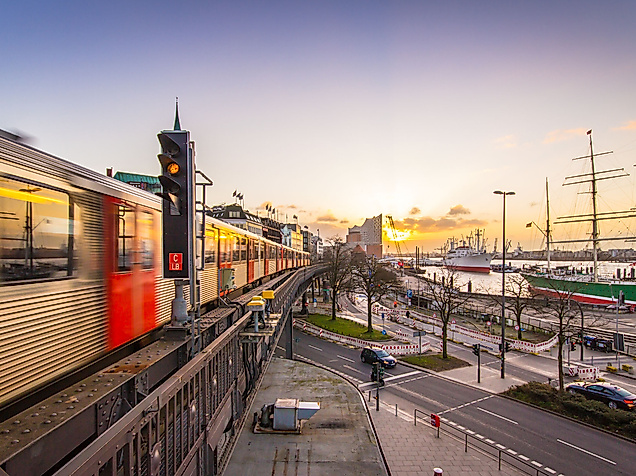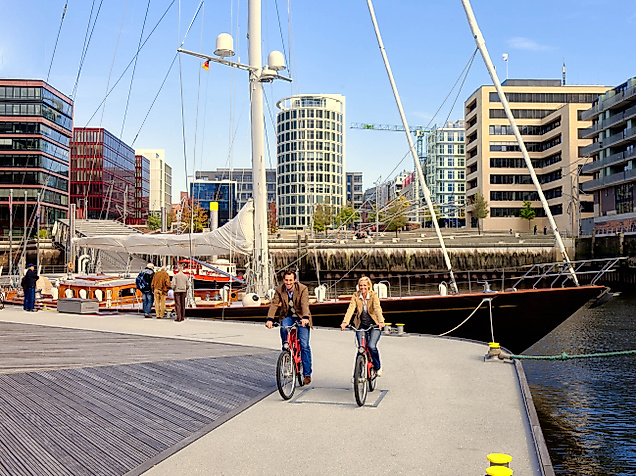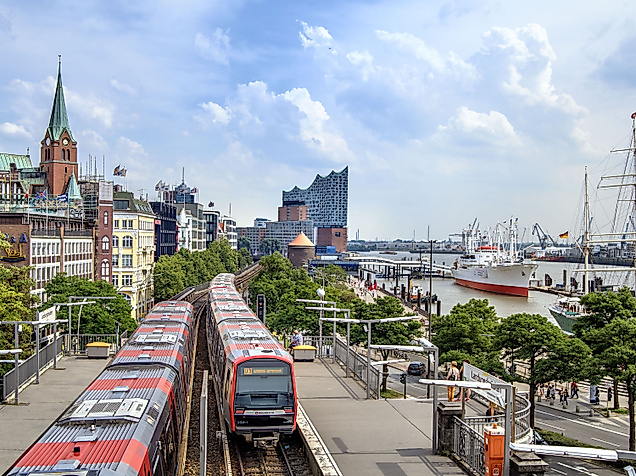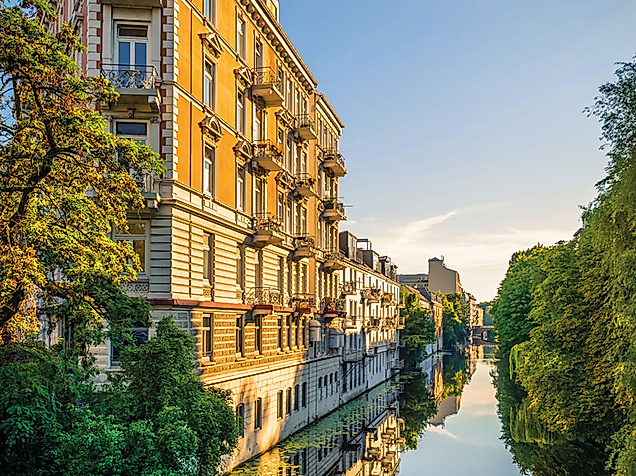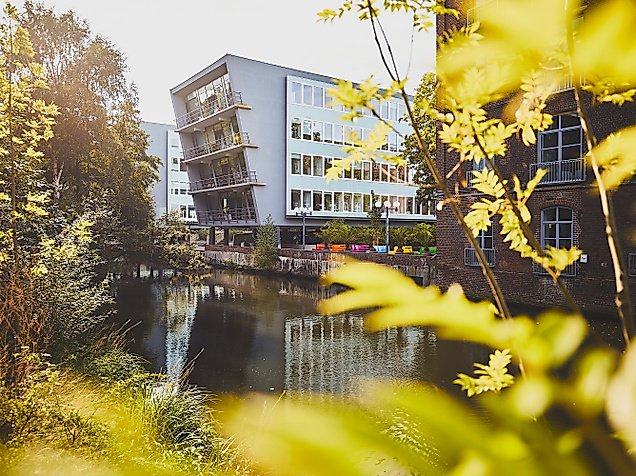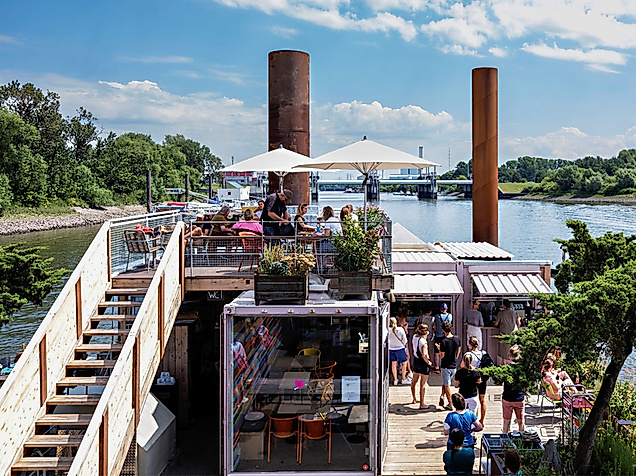
Cultural route
- Art and culture
- Out and about by the water
- Port history
The route in a nutshell
The cycle route from Hamburg’s main railway station to the inland port in Harburg encompasses approx. 15 kilometres. Walking distances in Harburg vary depending on your interests. All in all, the Harburg inland port and the town centre of the Harburg district are well manageable by foot.
Experiencing a historic port with modern-day charm
If you choose to take the bike, you will reach Harburg via the Alte Harburger Elbbrücke, a 474-metre-long steel arch bridge. It was the first road bridge to be constructed at the southern branch of the Elbe. Today it is only open to pedestrians and cyclists, and its peculiar architecture makes it the first highlight of this route. Now keep to the west to explore the bustle of the Harburg inland port – the nucleus of Harburg, which, up until 1937, was an independent town. Here you will find historic as well as modern ships, locks, old silos and oil mills alongside modern residential and office buildings. At the port, innovative new architecture is interspersed with historic harbour and warehouse buildings in red brick. Harburg’s port is the only sea port in Hamburg that is not affected by the tide, which makes it attractive for private ship owners.
At the Harburg Museum Harbour and the Lotsekai promenade, you can view historic vessels such as tall ships and cargo ships as well as historic cranes. The yellow gantry crane, which is still functioning, was once used as an industrial crane. Today, the crane is listed and is used for cultural purposes. Back in its active days, it would transfer bulk goods from water to road and rail; the old tracks and the cobblestones were deliberately preserved as well. As a creative gimmick, the quays are equipped with wooden benches that are mounted onto the old tracks and can be moved about by pedestrians as needed.
Strolling around Harburg’s historic old town
From the inland port to Harburg’s old town it is only a stone’s throw – just walk along Harburger Schlossstrasse in a southerly direction. Enjoy the special charm of this street, as it is one of the oldest streets in all of Hamburg. Several houses here are listed buildings and have been extensively renovated. One of them, Bornemann’s House, dates back to 1565 and is thus one of the oldest town houses in Hamburg. Just a few steps away is the electrum museum, where every Sunday, not only technology fans can discover all sorts of amazing and unknown things about the world of electricity.
Once you’ve crossed the federal road, you want to take a detour into Lämmertwiete, a quaint little street with small half-timbered houses nestled together, some of them wonky and crooked with age. Little wonder, though, as the oldest of these houses date back to the 16th century. In this car-free street, you can spend some time, especially since most of the historic houses are eateries.
Now walk further south to the imposing Harburg town hall, the facade of which is decorated with foliage and tendrils made of sandstone. On the nearby street called Sand, a farmer’s market takes place daily Monday to Saturday, providing locals with fresh fruit, vegetables, meats and other deli products. In summer, food trucks with bistro tables invite you to enjoy a bite to eat. The farmer’s market goes back to 1612, the era of William Augustus, Duke of Brunswick-Harburg, and continues to this day. Just around the corner, on beautiful Hölertwiete, you can find Harburg Info, a local service shop with extensive information material about Harburg and the surrounding region.
Discovering urban art at Northern Germany’s largest open-space gallery
The remainder of your route is all about art and culture. The new Walls Can Dance project in Harburg is Northern Germany’s largest connected open-space gallery for urban art. As part of this ongoing project, a number of Harburg buildings have already been adorned with inspiring murals by renowned international artists, and more of these large-scale artworks are to follow. Walls Can Dance aims to build bridges and thus overcome the spatial gap between the two main areas of Harburg – i.e. the town centre on the one hand and the inland port on the other – through selective artistic interventions. A unique audio walk allows visitors to discover Harburg from a different perspective, where Harburg provides the setting for a story in which you as the listener take on the main role. As a superhero, you will explore the area between the old town and the inland port, and the murals along the way will guide you.
For an extra culture fix, you should also take the opportunity to explore the Falckenberg Collection in the Phoenix-Hallen, which is an integral part of Deichtorhallen Hamburg. Comprising 6,000 m2 of exhibition space, the light-flooded halls of this former factory are Hamburg’s main venue for contemporary art. The private collection of Harald Falckenberg encompasses a total of 2,200 works, ranging from installations to paintings and photographs, of which around 700 are exhibited in rotation.
The S3 or S31 lines from the S-Bahn stations of Harburg or Harburg Rathaus will take you back to Hamburg’s city centre in no time. Or else you can rent a StadtRad at one of the stations in Harburg and cycle back into town at your own pace.
As a route planner, we strive to put together particularly diverse routes through Hamburg's most beautiful areas. Did you like our Cultural route? We look forward to receiving your feedback. To discover even more unique places in Hamburg, take a look at our city map.
